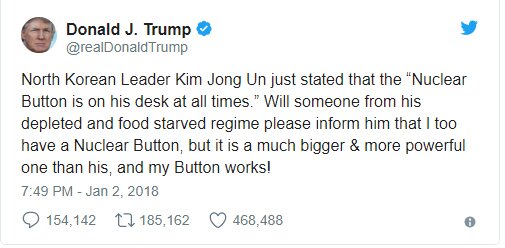Yet dialogue still has potentially immense value despite wedge risks. Tensions on the Korean Peninsula have skyrocketed over the past year due to the action-reaction cycle of North Korean missile and nuclear tests, followed by U.S. shows of military force and tighter sanctions. This growing hostility has increased the risk of a small-scale accident or crisis quickly escalating into a larger conflict. Restoring high-level diplomatic contacts between South and North Korea is unlikely to solve this problem completely, but communication channels could prevent a small incident from spiraling out of control.
Additionally, dialogue can help counter a major flaw in Trump’s approach to North Korea. There is no acceptable off-ramp that North Korea can follow to reduce U.S. pressure. While pressure is an important part of coercive diplomacy, imposing costs without offering the target a way out is unlikely to change their behavior. If the Trump administration wants to get North Korea to change its ways without fighting a war, there has to be some diplomatic path for Pyongyang to take. Dialogue between the two Koreas could offer such a path.
Moreover, the risks associated with a growing wedge in the alliance that could result from inter-Korean dialogue are mitigated by South Korea’s conventional military power. After the sinking of the Cheonan and shelling of Yeonpyeong Island in 2010, South Korea made significant investments in military capabilities and developed operational concepts that improved Seoul’s ability to unilaterally respond to North Korean provocations. One of the major objectives of the U.S.-South Korea alliance is preventing a reunification of the Korean Peninsula on North Korea’s terms. South Korea’s strong and increasingly independent military capabilities can achieve this objective, even if inter-Korean dialogue leads to a wedge in the U.S.-South Korea alliance.
The best way for the United States to reduce the risks of a wedge in the alliance is for Trump to change his behavior. Moon would want to open a dialogue with the North regardless of who occupies the Oval Office, but Trump’s bashing of the U.S.-South Korea free trade agreement, personal insults against Kim and vague threats of U.S. military action have undermined the traditional role of the United States as the stabilizing force on the Korean Peninsula. Moon doesn’t want to abandon the alliance entirely, but opening dialogue with North Korea is a more effective way for him to pursue his goal of peace on the Korean Peninsula than relying on a more aggressive and unpredictable United States with Trump at the helm.
The resumption of inter-Korean high-level dialogue is a cautiously optimistic development for peace and stability on the Korean Peninsula. Concerns about North Korea using the talks to drive a wedge in the U.S.-South Korea alliance should be taken seriously, but there are more benefits than risks—and the risks can be controlled. Restrained rhetoric from Trump and his administration would further reduce the probability of a wedge. After a year of skyrocketing tensions, all sides would benefit from such an approach.

